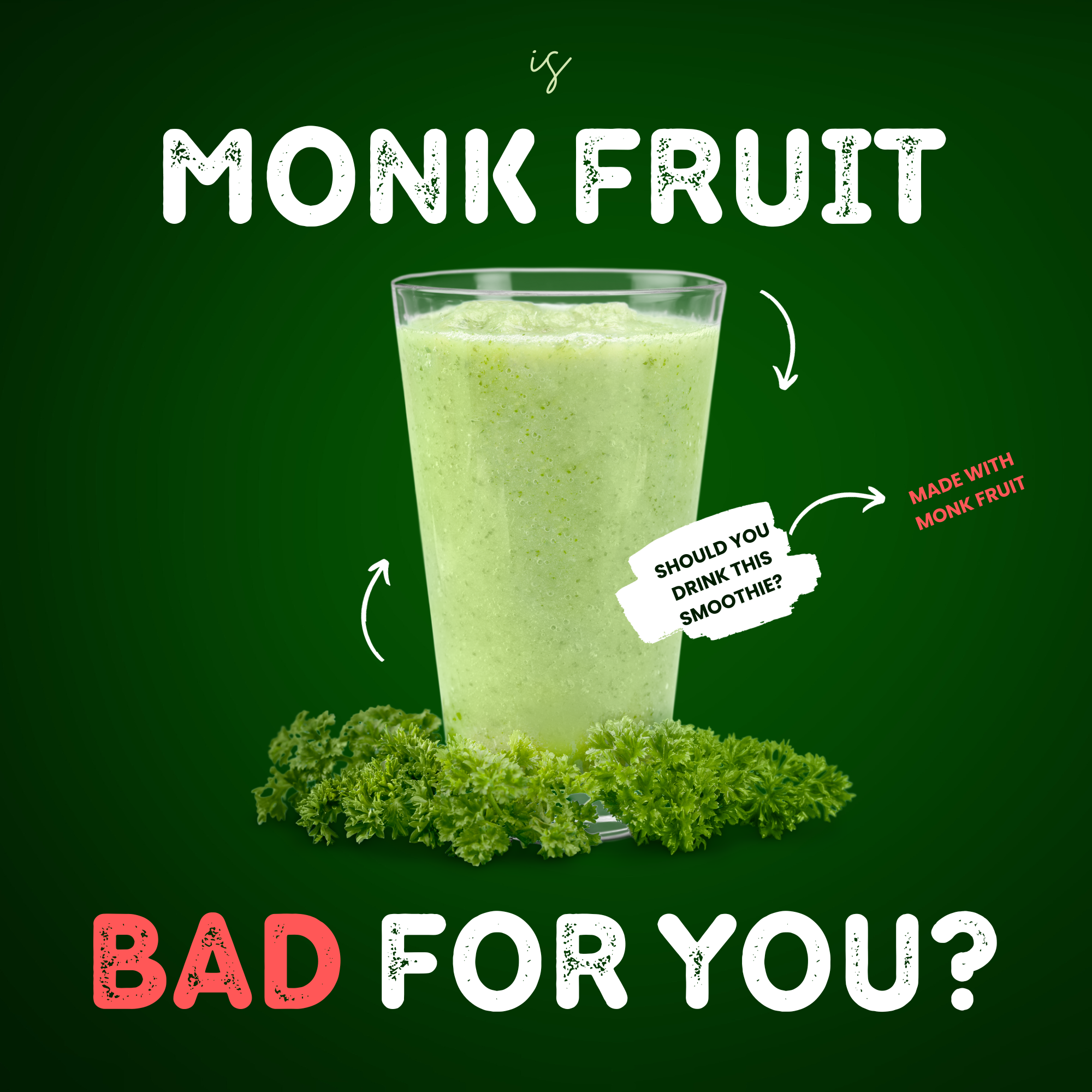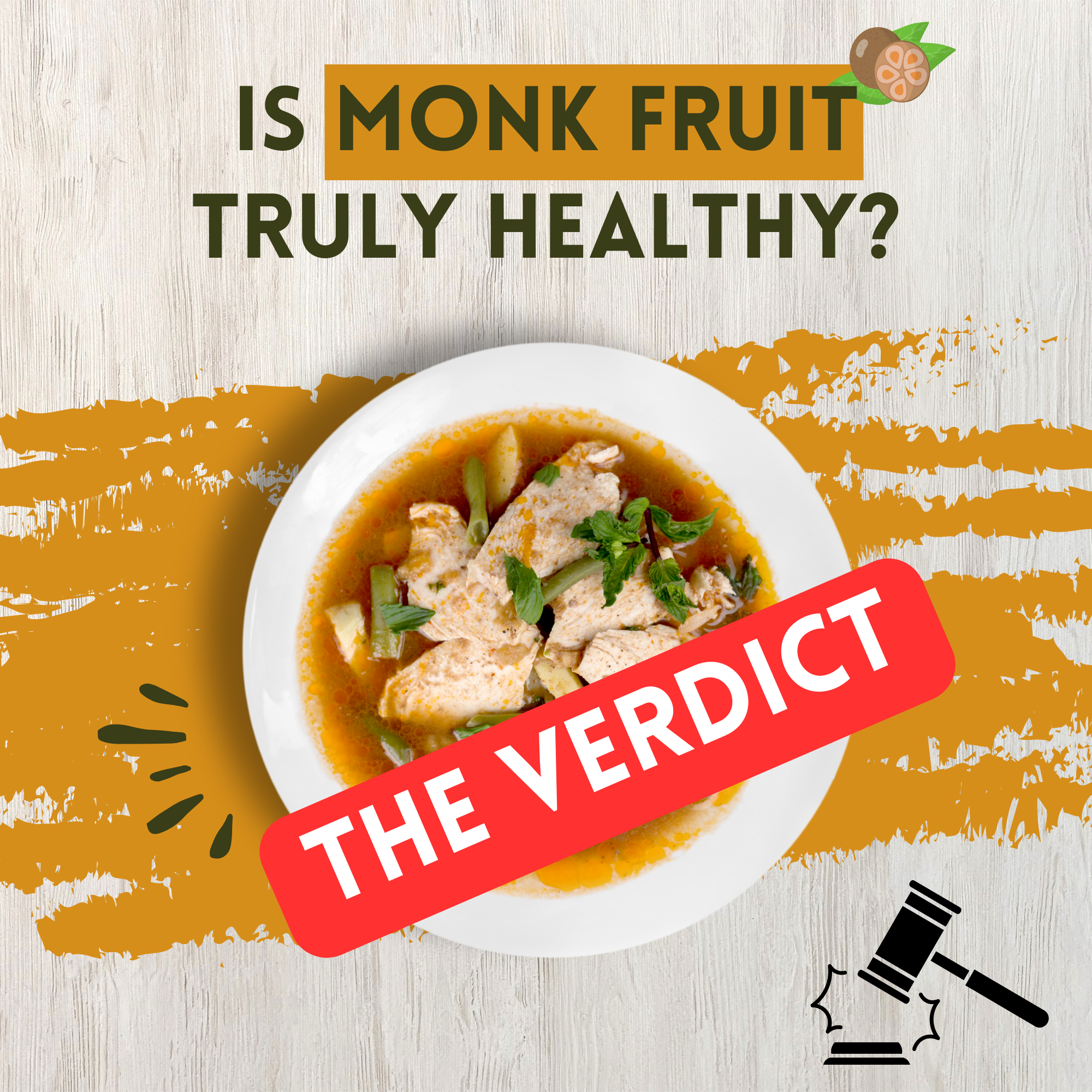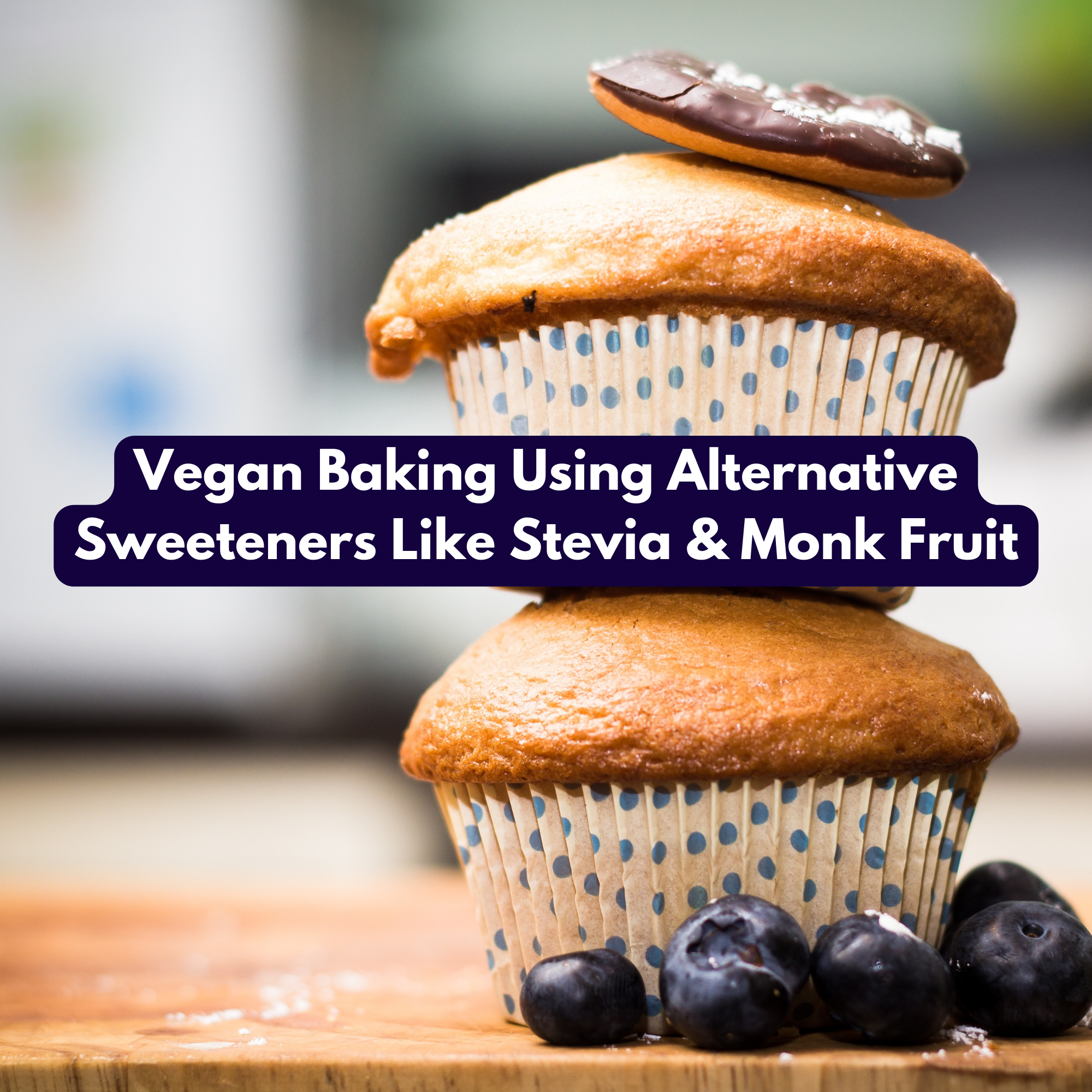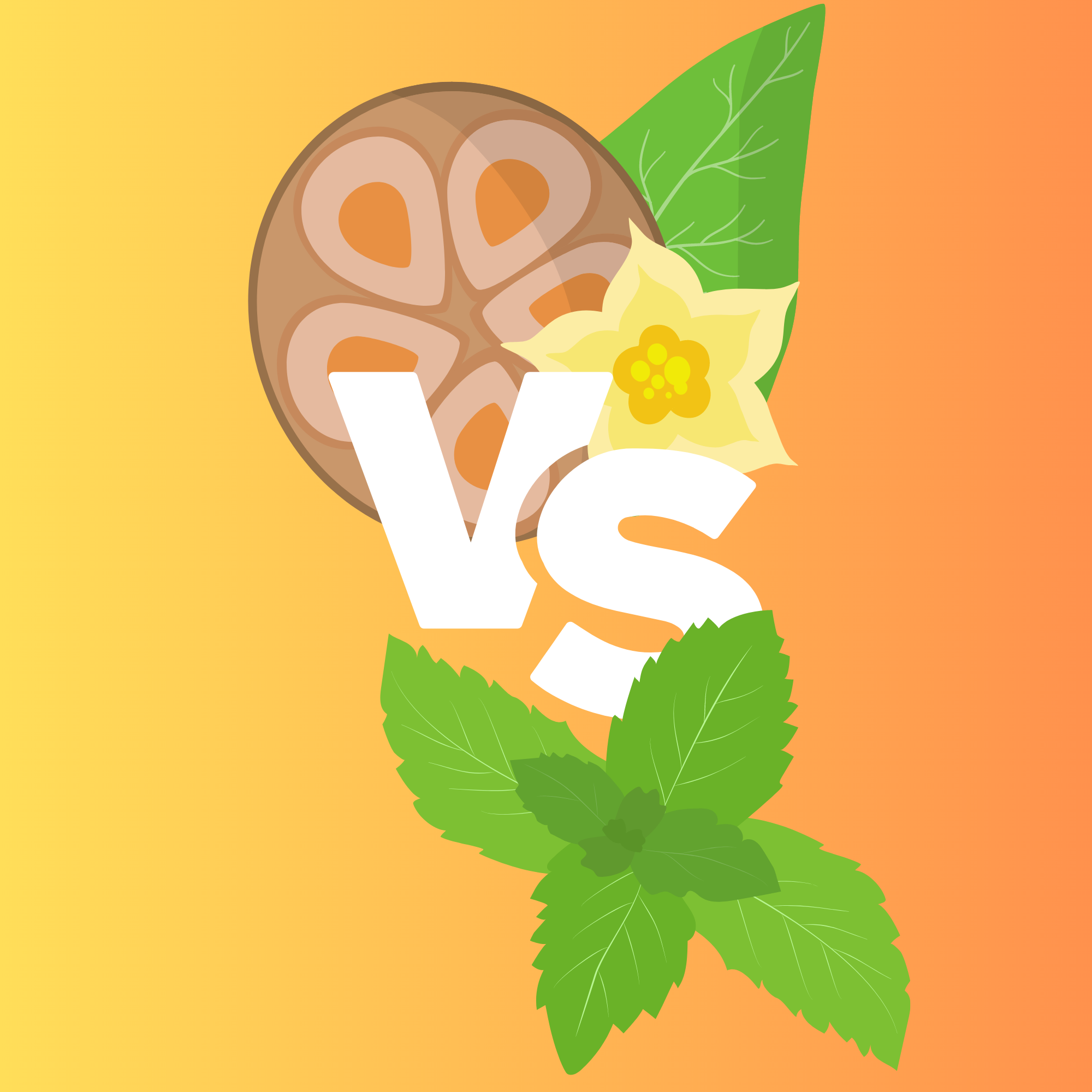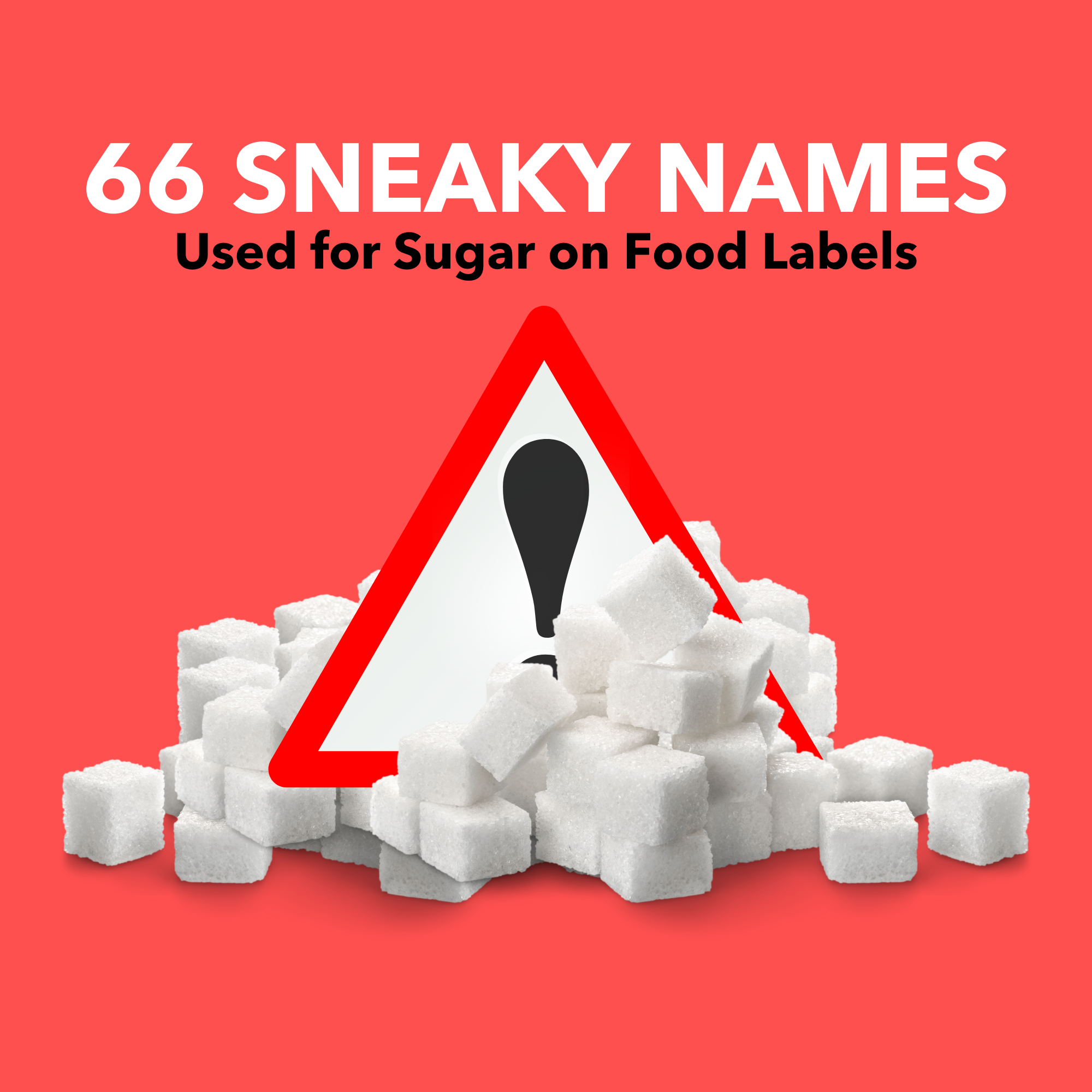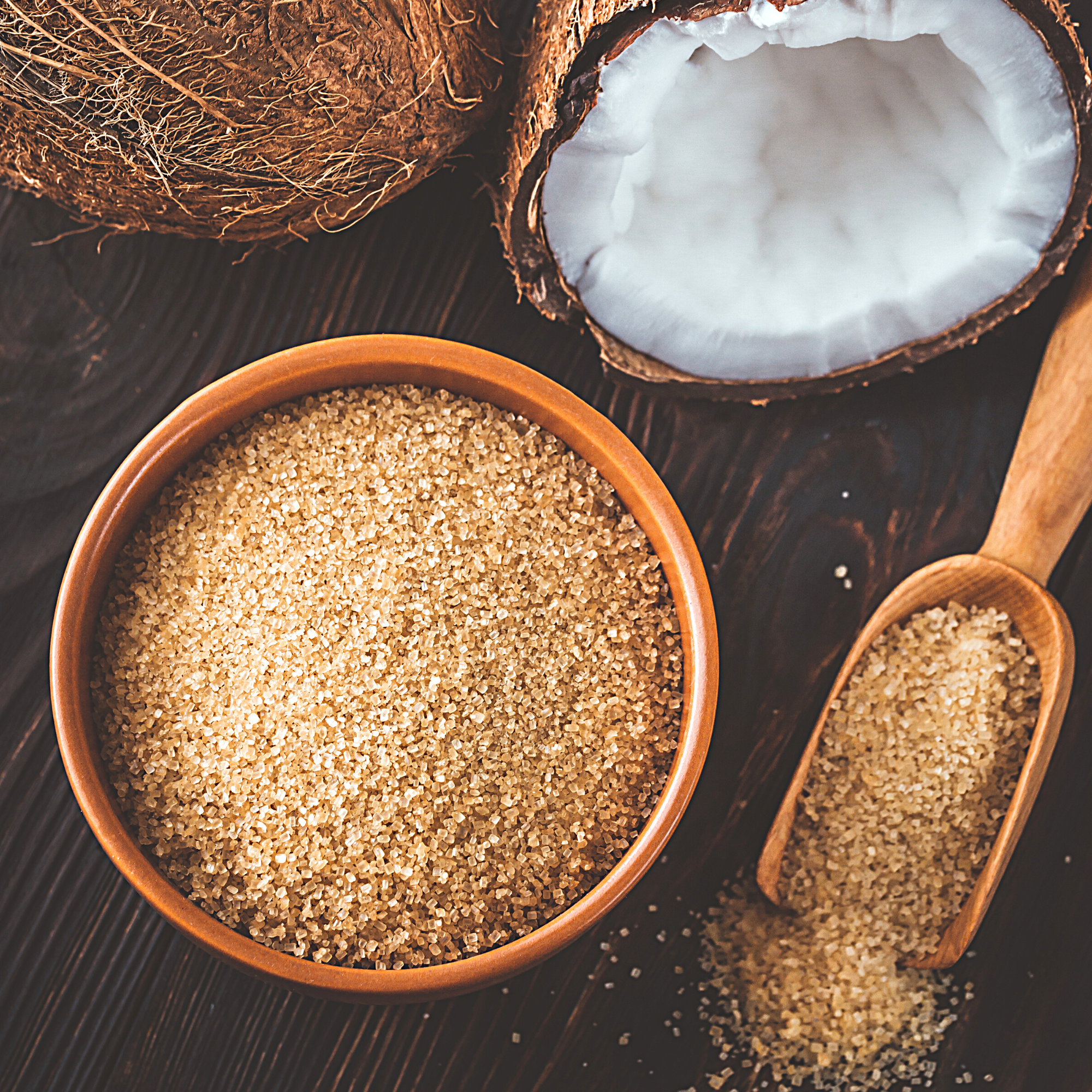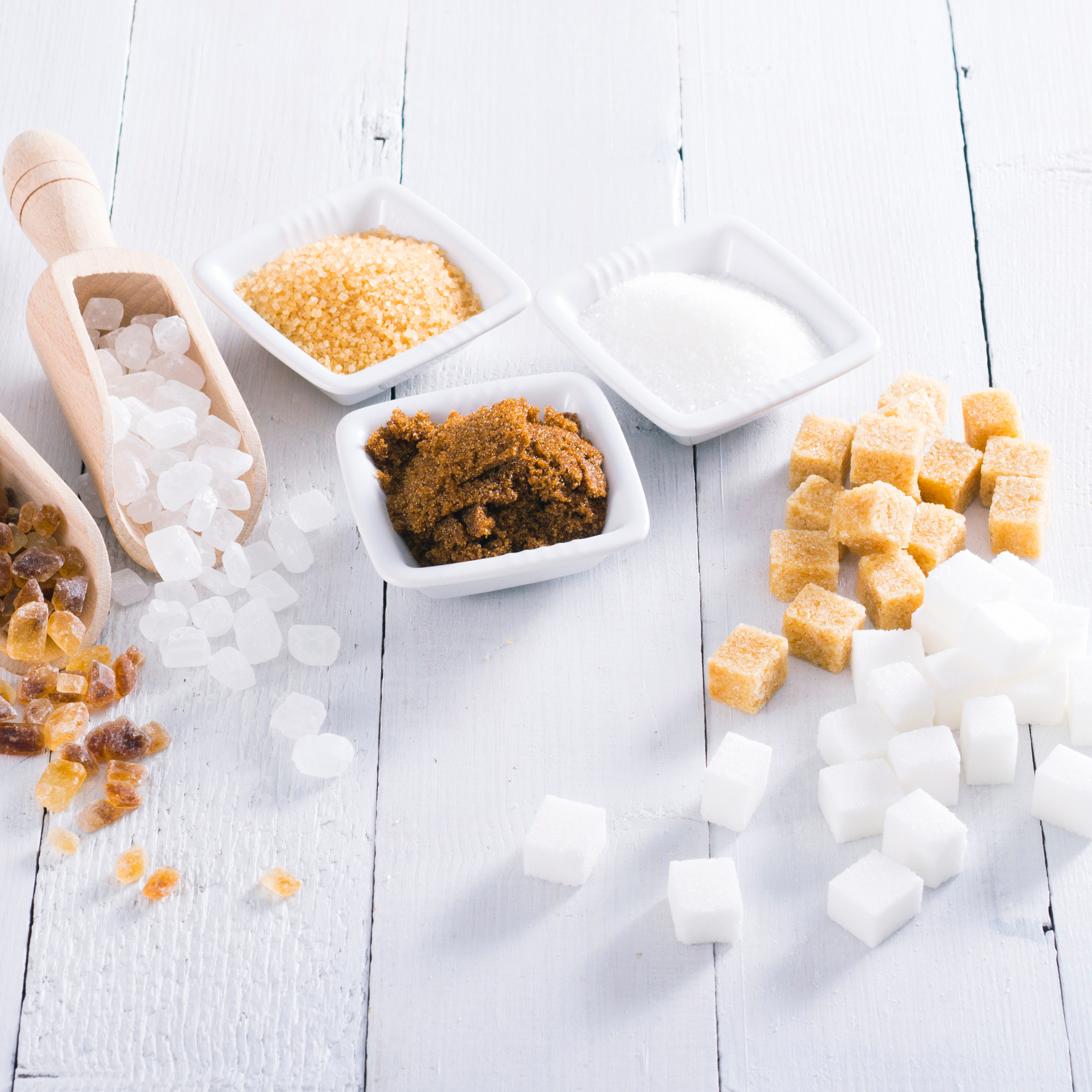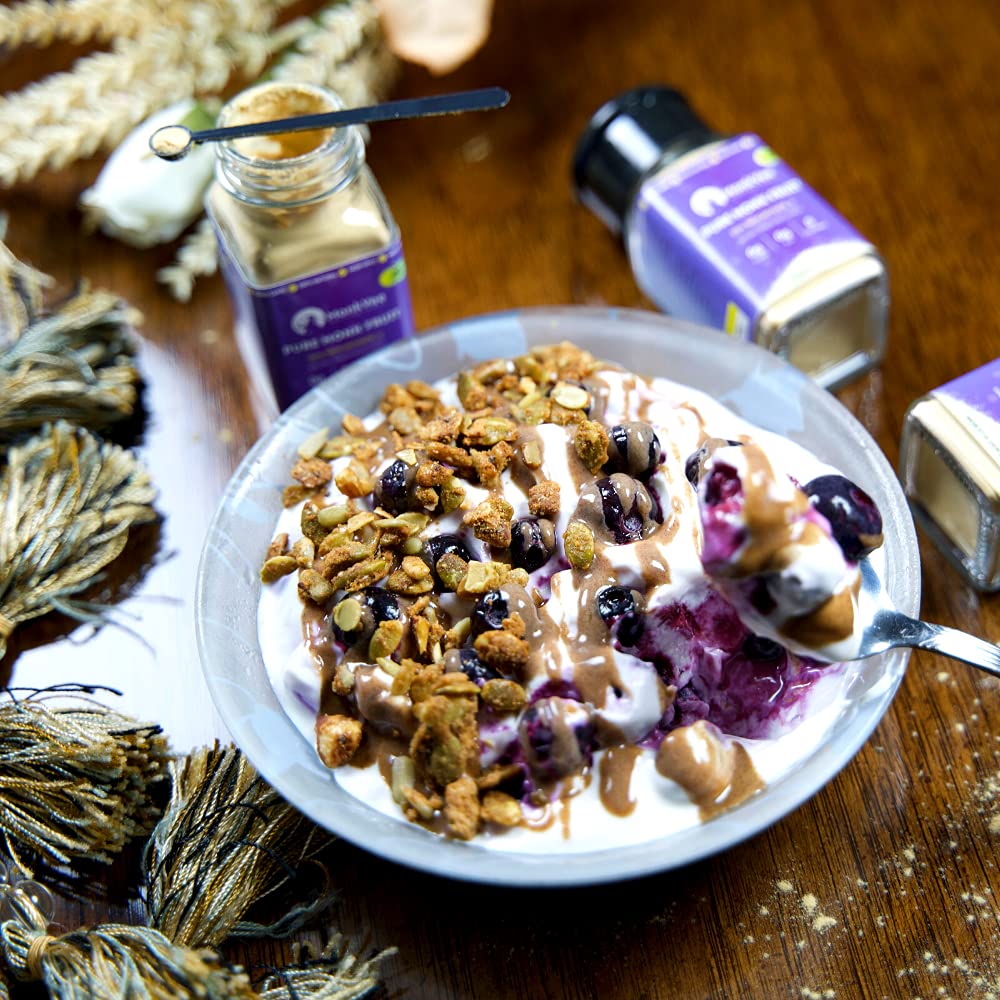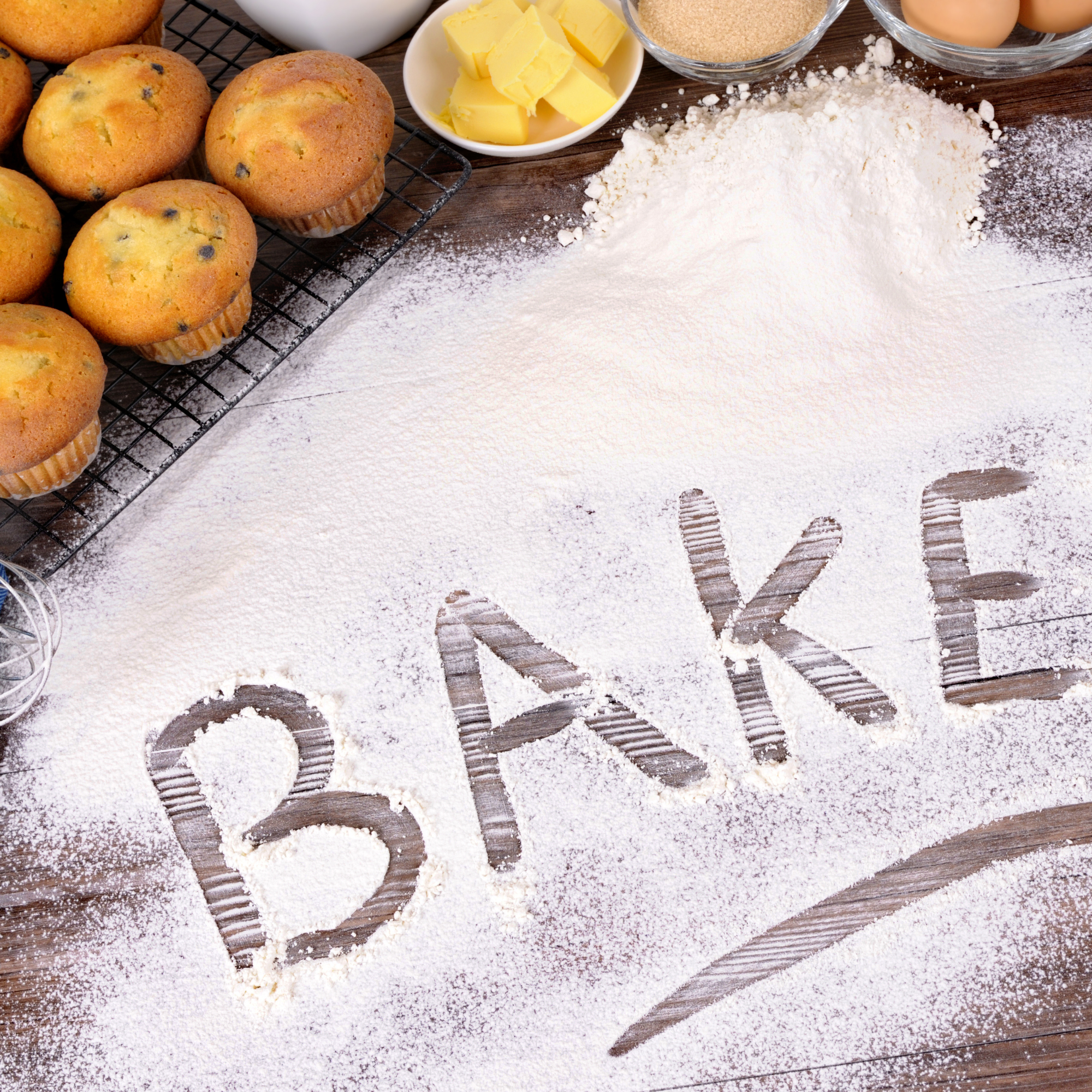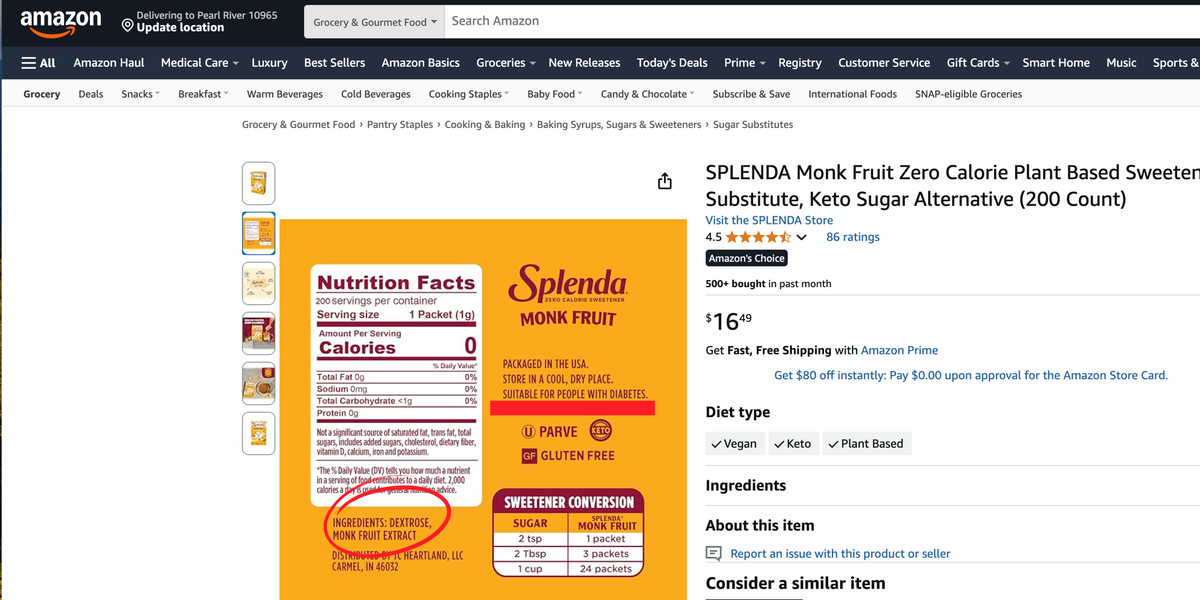
Sweet Lies: The Ultimate Exposé on Big Food’s Deceptions — and Why MonkVee is the Future of Sweetening
Two Kinds of People — and How Both Are Misled
There are two groups in America today when it comes to food and health:
1. The Health-Unaware
This group eats whatever they want, whenever they want, without thinking about ingredients or consequences. Soda, fast food, chips, sugary lattes — it’s all fair game. They live in the moment, blind to the slow burn of poor nutrition. Their motto: “If it tastes good, it must be fine.”
2. The Health-Aware (But Misled)
This group cares deeply about their health. They read labels, buy “low sugar” yogurts, snack on “protein” bars, drink “zero sugar” sodas, and choose “gluten-free” or “organic” whenever possible. They believe they’re making better choices. But here’s the painful truth: they are being misled — by carefully crafted packaging, misleading claims, and ingredients that hide in plain sight.
Both groups are trapped — one by ignorance, the other by deception.
The Marketing Machine — How Big Food Pulls the Strings
Big Food knows psychology better than most psychologists. They know:
- The word “natural” sells, even if the product contains artificial fillers.
- The word “zero” reassures, even when it refers only to “added sugar,” not total sugar.
- The word “keto” excites, even if the product contains hidden carbs.
- Color palettes trick the eye — green packaging suggests “healthy,” while brown and tan suggest “organic.”
Every aisle in the grocery store is a carefully designed theater, and you are the audience.
A Day in the Life of the Misled Health-Aware Consumer
Morning
- Breakfast Cereal: Marketed as “whole grain” but with 12–18g of sugar per serving. Add milk and fruit, and it’s essentially dessert.
- Flavored Yogurt: A small cup contains more sugar than a candy bar. The label says “low-fat” or “high protein,” but the sugar spike is real.
- Coffee Creamer: “Sugar-free” creamers often hide corn syrup solids, maltodextrin, or artificial sweeteners.
Midday
- Protein Bar: Advertised as “fuel.” Check the label: often 20+ grams of sugar alcohols, dextrose, or syrups.
- Salad Dressing: Caesar or vinaigrette with 6–8g of hidden sugar per serving. Multiply by three servings = soda-level sugar.
- Smoothie: Fresh-sounding, but often packed with apple juice concentrate, banana puree, or agave syrup.
Evening
- Pasta Sauce: Jars contain 6–12g of sugar per half cup.
- “Healthy” Ice Cream: Uses sugar alcohol blends, gums, and fillers.
- Gluten-Free Cookies: Still sugar bombs, just without wheat.
The health-aware consumer believes they are being smart. But at every step, the marketing machine has outsmarted them.
The Grocery Store Trap
Walk through the aisles:
- Granola: Marketed as heart-healthy. In reality, sugar-coated oats.
- “Vitamin Water”: Sugar water with added vitamins.
- Trail Mix: Nuts drowned in candy-coated chocolate.
- Energy Drinks: “Zero sugar” but with chemical sweeteners that cause digestive issues and cravings.
- Plant Milks: Almond and oat milks with added cane sugar or syrups.
Each purchase feels justified, but the cumulative effect is the same: cravings, crashes, weight gain, metabolic strain.
The Big Food Lies — Example After Example
- “Sugar-Free” ≠ Sugar-Free → often replaced with dextrose, maltodextrin, or syrups.
- “Keto-Friendly” ≠ Keto → net carbs often hidden with tricky fiber math.
- “All-Natural” ≠ Chemical-Free → “natural flavors” can mean lab-engineered.
- “Low-Fat” ≠ Healthy → usually means added sugar for taste.
- “Gluten-Free” ≠ Guilt-Free → many gluten-free products are sugar bombs.
- “Organic” ≠ Nutrient Dense → organic sugar is still sugar.
Health Unaware vs Health Aware (But Misled)
- Health Unaware: Doesn’t think about labels. Eats soda, chips, desserts. Consequences pile up over decades.
- Health Aware (But Misled): Tries hard. Reads labels. Falls for words like “natural,” “low sugar,” or “protein.” They spend more money on “better” products but are still victims of marketing spin.
Both groups are caught in the same cycle: cravings, inflammation, energy crashes, and health decline.
The MonkVee Difference
Here’s where MonkVee comes in:
- Pure Monk Fruit Extract → zero calories, zero glycemic impact, no fillers.
- Pure Stevia Extract → smooth, clean, no aftertaste.
- Blends with Erythritol → for those who want a spoon-for-spoon sugar replacement, with transparency and quality.
MonkVee refuses to play the “Big Food” game. We don’t hide ingredients. We don’t mislead diabetics. We don’t sell sugar under a different name.
If something better comes along and passes scientific scrutiny, we’ll carry it. Until then, nothing beats MonkVee monk fruit and stevia.
The Future of Food
Big Food thrives on addiction. MonkVee thrives on education, trust, and health.
The future belongs to companies that tell the truth — not those that trick people with green packaging and half-truths. Consumers deserve better, and the movement toward clean sweetening is only beginning.
“Suitable for diabetics”? Why that phrase can mislead in the real world
- If a “monk fruit” packet is mostly dextrose, its GI behavior reflects glucose, not monk fruit. Yet listings call it “suitable for those with diabetes.” Context missing: suitable at what dose, in which dietary pattern, alongside what else? Ingredient transparency matters more than front-of-pack claims.
- For clarity: erythritol (a sugar alcohol) is different—has no effect on blood glucose for most people, generally well tolerated; many clean 1:1 blends use erythritol or allulose as neutral carriers. We don’t bad-mouth erythritol; we bad-mouth confusion.
MonkVee’s stance: if we sell a blend, we’re crystal-clear about what’s inside. If it’s pure monk fruit, it’s pure monk fruit—no dextrose, no maltodextrin, no “mystery flavors.”
A week in the life: how health-aware shoppers still get sandbagged
Day 1 – Monday motivation
- “Greek yogurt, strawberry, low-fat.” Translation: a dessert in a 5-oz cup.
- Granola “honey oat.” Crunch = sugar glaze; “honey” is still sugar.
- Office coffee with a “monk fruit” packet—actually dextrose-based. Spike, crash, snacks.
Day 2 – Tuesday travel
- Airport smoothie: banana + apple juice base. Feels “fresh,” hits like soda.
- Protein bar: syrup + “natural flavors.” Check the carbs.
Day 3 – Wednesday wellness class
- “Vitamin water” after yoga: sugar water with a diploma.
- Salad kit: dressing sweetened with concentrated fruit syrup; crunchy bits = sugar.
Day 4 – Thursday “good choices”
- Oat milk latte (barista blend): added oils and sugars.
- Gluten-free cookie for “balance”: still a cookie.
Day 5 – Friday dinner
- Pasta sauce: “just tomatoes” (plus sugar).
- “Keto” dessert: great for some; others report cravings or GI distress depending on the sweetener mix.
Weekend grocery run
- Natural cereal: “cane sugar,” “brown rice syrup,” “molasses” … all sugar.
- Trail mix: chocolate candies + sweetened fruit bits.
- “Monk fruit” packets: look for carriers. If it’s dextrose, it’s not the monk fruit you think it is.
The fix: make the label make sense (fast heuristics)
- Flip first. Read the ingredient list before the front.
- Find the carrier. If it says dextrose or maltodextrin before “monk fruit extract,” plan for glucose-like behavior.
- Know GI context. Glucose/dextrose = ~100. Sucrose ≈ ~65. “Monk fruit” shouldn’t ride the 100 train. Harvard HealththeDr®
- Erythritol ≠ glucose. If you want spoon-for-spoon baking, a transparent monk fruit + erythritol blend is a legitimate tool.
- When in doubt, simplify. Brew coffee/tea; sweeten with pure monk fruit or pure stevia; build meals from whole foods.
Why MonkVee (and what we refuse to do)
- MonkVee Pure Monk Fruit: just monk fruit extract—no carriers, no fillers, no blood-sugar surprises.
- MonkVee Pure Stevia: calibrated for a clean profile (no aftertaste), great in coffee, tea, smoothies.
- MonkVee 1:1 Blends: when you need sugar-like volume for baking, we use transparent, quality carriers—never sneak-ins.
If the world discovers a cleaner, safer, better-performing sweetener that passes scientific scrutiny, we’ll sell it. What we won’t sell is junk masquerading as health.
Final word
There’s no conspiracy in the aisle—there’s incentive. The incentive is to stretch words until they mean what a shopper wants them to mean. That’s how you end up with “monk fruit” packets built on dextrose promoted as “suitable for those with diabetes.” The loophole isn’t illegal; it’s invisible to the rushed and the trusting.
You deserve better. Choose labels that match outcomes, not marketing. Choose ingredients that do what you think they do. Choose brands that will tell you the whole truth even when it’s inconvenient.
Choose MonkVee.
Sweetener Comparison
| Sweetener | Sweetness Level vs Sugar | Calories per Teaspoon | Glycemic Index | Aftertaste / Fillers | Verdict |
|---|---|---|---|---|---|
| Table Sugar | 1x | 16 | 65 | No fillers, but addictive | Tastes good, but fuels cravings & crashes |
| Pure Monk Fruit (MonkVee) | ~150x sweeter | 0 | 0 | No fillers, clean taste | Best sugar alternative – clean, natural, zero glycemic impact |
| Stevia | ~300x sweeter | 0 | 0 | No fillers, MonkVee has no aftertaste | Pure Stevia is a great option like Pure Monk Fruit |
| Coconut Sugar | 1x | 15 | 54 | No fillers, but still sugar | Marketed as “healthy,” but still raises blood sugar |
| Agave | 1.5x | 15 | 10–20 | No fillers, but high fructose | Lower GI, but high fructose load |
| Maple Syrup | 1x | 15 | 54 | Natural, but still sugar | Delicious, but not a real sugar-free alternative |
Millions of Americans are waking up to the processed sugar epidemic. Don’t be the last one stuck with the crash, bloat, and regrets — when MonkVee makes the swap easy.
What is Monk Fruit?
Monk fruit, also known as Luo Han Guo, is a small melon native to southern China. For centuries, Buddhist monks used it as a medicinal tea for longevity and wellness. Its sweetness comes from mogrosides — unique antioxidant compounds up to 150–300× sweeter than sugar, but with zero calories and no glycemic impact.
Why Choose MonkVee
At MonkVee, we deliver both pure monk fruit extract and pure stevia leaf extract — no erythritol, maltodextrin, or fillers. For those who enjoy blends, we also craft monk fruit + erythritol sweeteners that bake, brown, and caramelize just like sugar.
Health Benefits
- Zero Glycemic Impact – Perfect for diabetics and those watching blood sugar.
- Zero Calories – Helps with weight management without sacrificing taste.
- Antioxidant Power – Mogrosides have anti-inflammatory and antioxidant properties.
- Gut Friendly – No bloating, no digestive crash (unlike artificial sweeteners).
Calories & “Health Halo” Sweeteners
| Sweetener | Calories (per tsp) | Other Nutrition Claims | Reality Check |
|---|---|---|---|
| Table Sugar (cane) | ~16 | “Energy source” | Empty calories, high glycemic load |
| Coconut Sugar | ~16 | Lower GI, contains minerals | Still mostly sucrose |
| Date Sugar | ~15 | Made from dried dates | Still sugar, high calorie |
| Agave Nectar | ~20–21 | Low GI | High fructose load |
| Maple Syrup | ~19 | Minerals & antioxidants | Still sugar-heavy |
| Honey | ~16–20 | Natural, antibacterial | High sugar load |
| Jaggery | ~15–16 | “Unrefined sugar” | Same impact as cane sugar |
| Molasses | ~15 | Iron & minerals | Still concentrated sugar |
Competitor Ingredient Watchlist
* Some brands can reformulate often. Always check the nutrition label on products. This information can be inaccurate. It is worth noting that multiple brands are adding unhealthy additives and misleading the public.| Brand | Problematic Ingredients | Why It Matters |
|---|---|---|
| Monk Fruit in the Raw | Dextrose | Cheap filler; spikes blood sugar |
| Splenda Monk Fruit | Dextrose, Maltodextrin | Additives reduce purity |
| Whole Earth Monk Fruit Blend | Erythritol, Natural Flavors, Sugar | Contains sugar + vague flavors |
| Sugar in the Raw “Monk Fruit” | Cane Sugar | Not sugar-free; misleading |
| Sweet’N Low “Monk Fruit” | Saccharin, Dextrose | Artificial additive with history |
Quick Reference Summary
| Category | Best Fit For | Key Benefits | Caveats |
|---|---|---|---|
| Pure Monk Fruit Extract | Zero-calorie drinks & baking | Natural, antioxidant-rich | Very sweet; use sparingly |
| Monk Fruit 1:1 Blends | Daily sugar replacement | Easy swap; sugar-like texture | Higher price than sugar |
| Pure Stevia Extract | Teas, smoothies, keto | No calories, no aftertaste (MonkVee) | Other brands may taste bitter |
| “Natural” Sugars | Traditional recipes | Trace minerals | Same calorie & glycemic impact |
| Syrups | Flavor depth | Antioxidants, unique taste | High calorie, sugar-heavy |
Product Longevity
| Product | Sweetness vs Sugar | Daily Use Example | Average Duration |
|---|---|---|---|
| MonkVee Pure Monk Fruit Extract | 150× sweeter | 1 coffee/tea daily | ~6 months |
| MonkVee Pure Stevia Extract | 300× sweeter | Smoothie or tea daily | ~9–10 months |
Comparison with Competitors
| Brand | Strengths | Weaknesses |
|---|---|---|
| MonkVee | Pure extracts, premium taste, bulk sizes | Higher cost vs sugar |
| Monk Fruit in the Raw | Easy to find | Contains dextrose filler |
| Sweet’N Low “Monk Fruit” | Cheap | Contains saccharin & dextrose |
FAQs
1. Is monk fruit safe for diabetics? Yes. Pure monk fruit has a glycemic index of 0, meaning it does not spike blood sugar.
2. Does monk fruit cause digestive issues? Pure monk fruit does not. Only very high amounts of sugar alcohol blends may affect sensitive people.
3. Is monk fruit natural? Yes. Monk fruit is a whole fruit extract, no artificial chemicals.
4. What makes MonkVee different? No fillers, no maltodextrin. Transparent blends + pure extracts.
5. Is erythritol safe? Yes. It’s a natural sugar alcohol, calorie-free, diabetic-friendly, and well tolerated.
6. Why does MonkVee offer blends? Pure monk fruit is very concentrated (~150x sweeter). Blends with erythritol give 1:1 sugar swaps.
7. Does MonkVee have a stevia product? Yes. Our stevia is pure, clean, and with no aftertaste.
8. Is monk fruit good for weight loss? Yes. Zero calories, zero carbs.
9. Can monk fruit be used in baking? Yes. Especially golden monk fruit for rich desserts.
10. Does monk fruit taste like sugar? Yes. Clean, sweet, no bitterness.
11. Is monk fruit safe for kids? Yes, unlike refined sugar, it won’t cause sugar crashes.
12. How is monk fruit different from stevia? Monk fruit = smoother taste. MonkVee’s stevia = no aftertaste.
13. Where can I buy monk fruit? Online at MonkVee for purest, cleanest monk fruit.
14. Is monk fruit better than coconut sugar, agave, or maple syrup? Yes. Those raise blood sugar; monk fruit does not.
15. Can monk fruit be used in drinks? Yes. Coffee, tea, smoothies – perfect.

